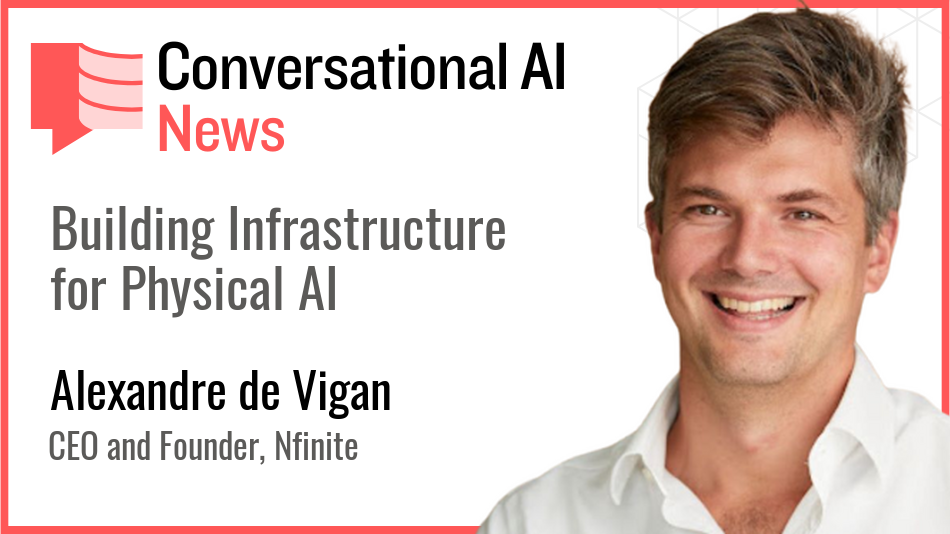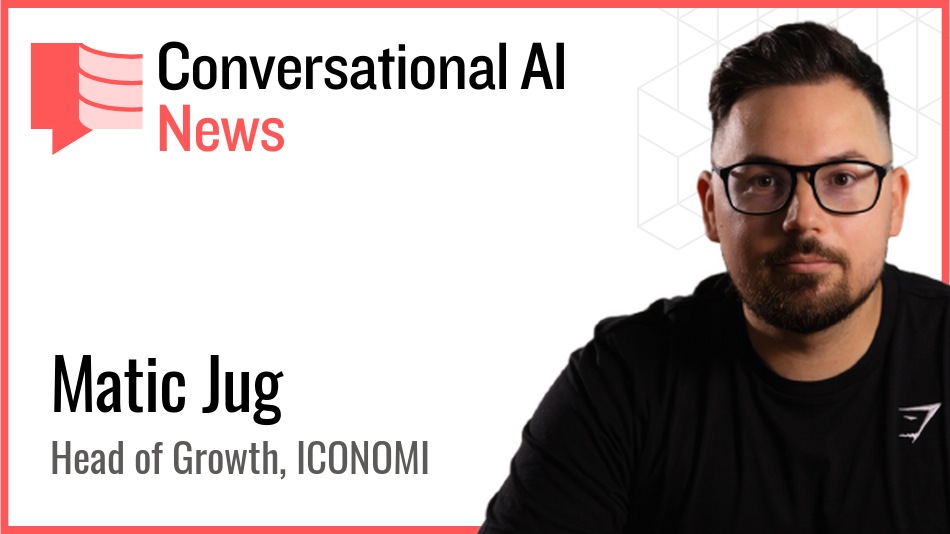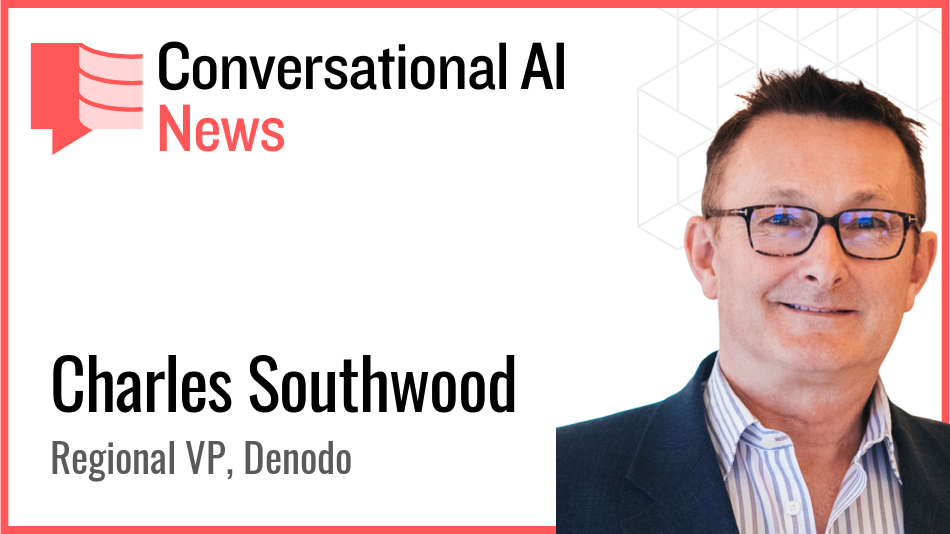Beyond Language Models: How Nfinite is Building Infrastructure for Physical AI

Say hello to Alexandre de Vigan, CEO of Nfinite. His company specialises in AI-powered visual content for brands & retailers.
Ok, over to you Alexandre – my questions are in bold.
Who are you, and what's your background?
I'm Alexandre de Vigan, founder and CEO of Nfinite. My academic background is in law and business—I studied at Sciences Po and later graduated from HEC Paris. I started my career as a corporate lawyer specializing in mergers and acquisitions, but I quickly realized I was more drawn to building than advising.
That entrepreneurial impulse led me to launch Nfinite. Initially, the company was focused on CGI for retail merchandising, providing scalable, customizable visuals for e-commerce. But over time, we saw the broader value of the technologies we were building—particularly in how they could enable intelligent systems to understand and interact with the physical world. That realization led to our current focus: enabling Physical AI.
What is your job title, and what are your general responsibilities?
As CEO, I set the strategic vision and lead the transformation of Nfinite as we evolve from a visual content platform into a core infrastructure provider for Physical AI. On a daily basis, I work across R&D, product, and commercial teams, forging strategic partnerships, aligning our roadmap with the most advanced AI use cases, and ensuring we're positioned to be a key player in the future of machine perception and physical intelligence.
Can you give us an overview of how you’re using AI today?
Nfinite empowers AI systems to understand, simulate, and interact with the physical world. Our platform delivers high-fidelity, structured 3D visual environments that serve as training, simulation, and testing grounds for AI agents, particularly in robotics, autonomous systems, and embodied AI.
We're not building models ourselves, but we're solving a foundational challenge for the AI industry: the lack of clean, spatially coherent, scalable data that models need to perform effectively in real-world contexts. Whether it’s enabling a robotic assistant to move through a warehouse or simulating a complex manufacturing environment, our role is to bridge the gap between AI and the physical world.Tell us about your investment in AI.
What’s your approach?
AI is at the heart of our business transformation. We've built a dedicated team focused on 3D data generation, simulation science, and AI-driven scene understanding.
Our approach is a hybrid of internal innovation and strategic collaboration:
- We build proprietary tools that automate and structure high-fidelity 3D content
generation and simulation. - We partner with leading AI labs and tech companies to ensure our
environments integrate seamlessly into their model training pipelines.
We also invest heavily in vertical adaptation, ensuring our outputs are tailored
to industries like robotics, automotive, logistics, and healthcare. This is no longer an "R&D side project" – it's now our core business engine.
What prompted you to explore AI solutions? What specific problems were you trying to solve?
Our journey began with the need to create scalable visuals for e-commerce. But in
solving that, we realized a much bigger problem: AI systems lacked access to
physical context. They were being trained on 2D images, unstructured data, or generic environments that didn’t reflect the real-world complexity of physical interactions.
What was missing was intelligence grounded in the spatial world—how things move, react, and relate in three dimensions. That realization was the tipping point that led us to shift from visual merchandising to becoming a key enabler of Physical AI.
Who are the primary users of your AI systems, and what's your measurement of success? Have you encountered any unexpected use cases or benefits?
Today, our main users are AI research and innovation teams within major tech
companies. These teams are developing the foundational agents and models that will drive the next wave of automation and autonomy. They rely on our platform to simulate real-world physics, render edge-case scenarios, and build controlled training environments that accelerate development.
We’re also increasingly in conversation with large enterprises in sectors like
automotive, logistics, and healthcare—each exploring vertical use cases for intelligent systems that require spatial and physical reasoning.
Success is measured by how much we accelerate their AI performance and
deployment:
- Faster time-to-deployment for autonomous and robotic systems.
- Improved accuracy and generalization of models.
- More efficient simulation-to-real-world transfer.
One particularly exciting use case has been in robotic surgery and medical
simulation, where context-aware 3D environments are used to plan and optimize
surgical interventions. We’ve also seen interest in applying our platform to predictive maintenance, QA automation, and industrial simulation scenarios.
What has been your biggest learning or pivot moment in your AI journey?
Our most pivotal moment was realizing that we were no longer a CGI platform—we had become a physical intelligence enabler. That reframing changed everything: our product strategy, our go-to-market approach, even our hiring roadmap.
This shift required us to rethink how we create value—not by generating visuals for
humans, but by creating structured, meaningful data environments for machines.
That mindset change allowed us to scale into new verticals and align with the biggest trends in AI, from embodied agents to digital twins and real-time simulation.
How do you address ethical considerations and responsible AI use in your organisation?
We take a data-first approach to responsible AI. Our environments are clean,
controllable, and fully synthetic, which eliminates many common issues around bias, privacy, or copyright infringement.
We work closely with clients to ensure their AI models are trained on ethically sourced, contextually relevant data. We also promote transparency in dataset composition, and we’re developing tools that allow users to audit, trace, and understand how training environments are built and validated.
As AI begins to act more autonomously in the physical world, safety, traceability, and trust will be critical—and we’re building toward that future.
What skills or capabilities are you currently building in your team to prepare for the next phase of AI development?
We’re hiring and developing talent in:
- 3D spatial computing and simulation engineering
- Computer vision and multimodal model integration
- Generative scene modeling and automation
- Domain-specific AI infrastructure for industries like robotics, automotive, and healthcare
We also emphasize interdisciplinary thinking—combining AI with physics, ergonomics, and systems design—to ensure our outputs are grounded in real-world complexity.
If you had a magic wand, what one thing would you change about current AI technology, regulation or adoption patterns?
I would fast-track the creation of open standards for physical AI environments—including how datasets are shared, validated, and evaluated. There’s still too much fragmentation and duplication in simulation efforts across industries.
Having a shared ecosystem—similar to how software development matured with Git or Docker—would massively accelerate innovation and interoperability in physical AI systems.
What is your advice for other senior leaders evaluating their approach to using and implementing AI?
Don’t limit your AI thinking to text and language models. The next wave of AI innovation will be spatial, embodied, and physical—whether that’s a warehouse robot, a smart manufacturing agent, or a virtual co-pilot in surgery.
Start by identifying the physical contexts where decisions happen in your business. Then work backward: What kind of data does a machine need to understand and act intelligently in that space? That’s where the transformation begins.
What AI tools or platforms do you personally use beyond your professional use cases?
Like many, I use ChatGPT as a daily thinking partner—for research synthesis, drafting, or even challenging my assumptions during strategic planning. It’s become an essential extension of my workflow.
Beyond that, I enjoy exploring new, elegant productivity tools that use AI
intelligently.
A few favorites:
- Rewind – A privacy-first AI memory tool that passively captures everything I see, hear, and say on my Mac, and makes it searchable. It’s like a second brain that lets me recall meetings, emails, or web content
instantly. - Superhuman AI – My go-to email client. Its AI features make inbox management feel effortless—drafting, replying, summarizing—it brings a surprising level of calm to email.
- Notion AI – A powerful knowledge
management and thinking space. I use it to structure ideas, document insights,
and collaborate with my team asynchronously. - Claude by Anthropic – A strong complement to GPT-based tools, especially when I want a second AI perspective on complex or nuanced topics.
These aren’t just nice-to-haves—they’ve meaningfully improved how I work,
reflect, and make decisions.
What's the most impressive new AI product or service you've seen recently?
NVIDIA’s integration with Toyota to bring AI-enhanced autonomous systems into
production vehicles is incredibly compelling. It highlights how simulation, visual
intelligence, and real-time decision-making are converging into real-world products at scale.
Their broader vision with Omniverse, digital twins, and agentic AI is setting the tone for how AI will operate in physical environments—not just as software, but as systems that shape how we live and work.
Finally, what trends do you think will define the next 12–18 months in the AI technology sector, particularly for your industry?
I see three defining trends:
- Agentic AI meeting the physical world: AI systems capable of autonomous decision-making will increasingly control machines, not just workflows.
- Simulation-first development: More industries will adopt virtual environments as the starting point for product design, testing, and training.
- Vertical AI agents: From autonomous vehicles to surgical robotics, we'll see a surge in domain-specific intelligent systems built from the ground up for physical tasks.
The common thread is physical intelligence—machines that can see, understand, and act in the real world with precision and reliability. That’s the frontier we’re building for.
Thank you so much Alexandre!
You can read more about Alexandre on their LinkedIn Profile and find out more about Nfinite at www.nfinite.app/




